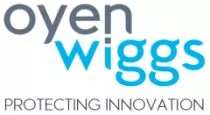One manner of protecting computer software in Canada is by owning copyright in the underlying code. Under Canadian law, copyright subsists in both the source code and assembly code of computer software. However, it is a well-accepted principle of copyright law that copyright only protects expressions of ideas, and not the underlying ideas themselves. For works like software, which often implement ideas, how far does copyright protection extend? Put another way, how different must software be to avoid infringing copyright in other software? Does the requisite difference depend on factors such as whether or not the software implements commonly used algorithms, libraries, or interfaces such as APIs? Unfortunately, there is no clear answer. However, two cases provide some guidance on this issue.
The leading Canadian case on software copyright is Delrina Corp v Triolet Systems Inc., 2002 CanLII 11389 (ON CA), 17 CPR (4th) 289. In Delrina, the Court set out to determine if a competing software program infringed copyright in a first program. In reviewing the two programs, the Court asked if the similar portions of the two programs were protectable by copyright, or if they were the only way or only logical way of accomplishing a task, were public domain routines, were dictated by the hardware, or were otherwise used for like reasons.
The Court in Delrina found that copyright subsisted in the first program. However, many of the similarities between the two programs were dictated by the nature of the programs, and were therefore not original expressions attracting copyright protection; therefore copyright was not infringed. What is unclear from Delrina is how copyright may subsist in a work, but how substantial reproduction of the work may still not amount to infringement, if the reproduced portions are not original expressions. Put another way, the question remains: how can copyright subsist in a work, but not in its constituent parts?
Courts in the United States have addressed this question by applying a so-called abstraction-filtration-comparison test, wherein the copyrightable portions of a work are filtered out, and compared to an allegedly infringing work. The court in Delrina did not definitively answer whether or not this test is part of Canadian law.
The abstraction-filtration-comparison test in the context of software was revisited in Cinar Corporation v Robinson, 2013 SCC 73. In Cinar, the Court set out to determine if a television program infringed copyright in a television script and similar materials. In addressing the issue of infringement, the Court held a "qualitative and holistic approach" (Cinar at p. 143) should be taken, "from the perspective of a person whose senses and knowledge allow him or her to fully assess and appreciate all relevant aspects ― patent and latent ― of the works at issue" (Cinar at p. 51). The Court did not apply the abstraction-filtration-comparison test, but "[did] not exclude the possibility that such an approach might be useful in deciding whether a substantial part of some works, for example computer programs, has been copied" (Cinar at p. 35).
As such, we are left with (non-binding) guidance from the Court, indicating that the abstraction-filtration-comparison test may be applicable to software. However, even if this test is applicable in Canada, we are still left with many questions. For example, when does a function declaration became the only logical way of implementing a function? What about proprietary interfaces? Can copyright subsist in function declarations, or function calls? What about implementations of functionality which have become second nature to users such as dragging, dropping or sliding to unlock? Unfortunately, much uncertainty remains.
The content of this article is intended to provide a general guide to the subject matter. Specialist advice should be sought about your specific circumstances.

